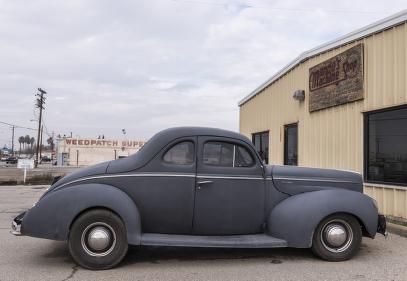While NASCAR has fans all over the United States, it is truly a Southern sport, and one that was the product of illegal activity that grew out of the “day jobs” most of the early NASCAR greats worked: they transported bootleg whiskey to eager customers all over the South.
While national prohibition of alcohol was overturned in 1933, many counties and entire regions remained dry, and from the 1930s to the 1950s, illegal liquor remained a huge business enterprise.
In fact, Columbia County did not allow the sale of hard alcohol until 1993, long after bootlegging ceased to exist.
According to the NASCAR Hall of Fame, luminaries such as Wendell Scott, Curtis Turner and Bill Flock were “whiskey trippers.” Meanwhile, Hall of Fame team owner Raymond Park operated one the largest illegal manufacturing outfits out of Dawsonville, Ga.
In the early days of prohibition, runners used Model T Fords because there were so many of them on the roads that they blended in well, but by the 1940s, the game had changed.
MORE: MotorHeadline: Model names are part of the legacy and should be handled with care
According to Hugh Williamson, writing for Axle Addict, one of the most popular cars for runners was the 1940 Ford Standard Coupe. The flat-head 8 engine was hearty and could be tuned to crank out enough horsepower to leave the cops in the dust.
Many also dropped Cadillac ambulance engines in their 1940 Fords to make them even faster, Williamson writes.
Over time, Oldsmobile Rocket 88s, Dodge Coronets and even Chevrolet Coupes were used because they were fast, indistinct and had large trunks to fit plenty of product. Unlike flashy NASCAR vehicles with numbers, decals and sponsor ads, the ‘shiner cars were painted in muted colors to fit in.
Not only were the engines modified for maximum output, runners would install heavy duty suspensions to carry the load.
Runners also got clever with other modifications as well, according to Williamson. Anything that unnecessarily weighed the vehicle down was removed. Tanks that could resemble seats were installed and covered with upholstery. Some cars even included a tank within the gas tank to carry a little extra tipple.
However, the cars were only a part of the operation. The so-called “G-men” knew they had little chance of catching a fleeing runner, so they resorted to other methods, and the runners still beat them out nearly every time.
Shiners would wear shoes with modified soles that would resemble cow hooves, leaving tracks in the mud, so as not to give away the sites of the stills.
MORE: MotorHeadline: The evolution in car safety
One thing that made the early NASCAR drivers so great was their ability to think and respond behind the wheel quickly, according to the Hall of Fame.
While a Rocket 88 could outrun almost anything, it was powerless at a roadblock. So, runners had to have an encyclopedic knowledge of the terrain, memorizing every side road so they could bail at the last minute and avoid the roadblock ahead.
With liquor stores all over the place today, it is easy to romanticize the past, but at the time it was very serious business.
NASCAR legend Junior Johnson was once quoted as saying: “Moonshiners put more time, energy, thought and love into their cars than any racer ever will. Lose on the track and you go home. Lose with a load of whiskey and you go to jail.”
To remember NASCAR’s ignoble beginnings, Johnson donated a working whisky still that is displayed prominently at Heritage Speedway.
So, what we are watching on TV today actually once happened on the public roadways and it is definitely safer for the public that stock car racing is confined to the racetrack.
See you on the road!
Scott Hudson is the senior reporter for The Augusta Press. Reach him at scott@theaugustapress.com











